For president and CEO Michael Jones and his team at West Kirkland Mining (WKM-V), the path forward is clear: establish a strong land position in an emerging gold district, and operate with the tenacity and business savvy needed to stay there. In this case, it is the Long Canyon gold trend that lies along the eastern flank of the Pequop Mountains in Elko County, Nev.
Jones and co-founder Frank Hallam have a history of success with this strategy. The two men started-up West Timmins Mining, which was acquired by Canadian miner Lake Shore Gold (LSG-T, LSG-X) in a friendly US$320-million deal in 2009, and played a key role in founding emerging silver player MAG Silver (MAG-T, MVG-X), which is advancing its Cinco de Mayo silver project in Chihuahua State, Mexico.
“We’ve been down this trail before . . . with West Timmins as an example, it took us four years and nineteen deals before it was done, and it was in fact the last deal we completed that turned out to be the clincher that resulted in that big discovery,” Jones says during a conversation in West Kirkland’s boardroom. He explains that consolidating the company’s large land package in Nevada is a priority. “We have the luxury of time and flexibility due to the institutional support because we’ve made people a lot of money in the past, and they thank us by coming back. This company is an example of that strategy, and though it is in its infancy, it is actually the largest land position I’ve been involved in to date.”
West Kirkland is sitting on roughly 1,200 sq. km in the region it acquired through various property deals since 2010.
Under one earn-in agreement with Long Canyon powerhouse Newmont Mining (NMC-T, NEM-N), the junior can earn up to 51% in 11 separate properties over 234 sq. km by spending US$15.4 million through 2014. Assuming West Kirkland spends US$4 million on any given property or advances it to the prefeasibility stage, it will increase its stake in that project to 60%.
Newmont scored a major foothold in the region when it bought explorer Fronteer Gold for US$2.2 billion in 2011. Jones says Newmont holds a shade below 10% of West Kirkland’s outstanding shares as a result of the land arrangements.
“It’s been a positive relationship,” Jones says of New an change as the deposits grow, and the things we accomplish, the things we’ve set out to do — we expect a more aggressive role from their side.”
A second agreement with Rubicon Minerals (RMX-T, RBY-X) covers 952 sq. km across the valley northeast of Newmont’s Long Canyon deposit, where West Kirkland can earn a 51% stake by spending US$15 million over four years. The company can raise its stake to 60% under the same terms as the Newmont agreement.
Jones says his company enjoys having private land rights, which mean that West Kirkland avoids costs and complications associated with the U.S. Bureau of Land Management.
Driving along a dusty road in September with vice-president of exploration Michael Allen and project manager Rich Histed, it’s possible to glimpse Basque cowboys herding cattle over rolling plains, with ranchers being the main landholders in the area.
“If you orient yourself on the Long Canyon trend and head around 23 km northeast, you’ll find yourself at our TUG deposit,” Allen explains, spreading a map over the hood of his white pick-up truck, parked on the roadside near Newmont’s deposit. “The regional fabric of the Long Canyon trend affects the mineralization that we’ve observed so far,” he says. “You can draw a line right through our Toano property and north to TUG.”
And standing atop a hill on West Kirkland’s TUG deposit, it is evident why Jones views the asset as a linchpin in his regional strategy. He plans on fast-tracking the deposit into heap-leach production and using the cash flow to expand his team’s knowledge of the district in a bid to make bigger and more exciting gold discoveries, with limited equity dilution.
TUG’s mineralization comes to surface, and an operation would carry low upfront costs combined with a competitive strip ratio. Allen points out the deposit, which runs across the rugged Nevada plain to a neighbouring hilltop. Jones estimates he could get TUG going for roughly US$30 million, explaining he’s had previous experience with similar operations, such as Cathedral Gold and its nearby Sterling heap-leach gold mine.
West Kirkland has completed its 51% earn-in on TUG. After releasing a maiden resource estimate in late May, the company needs to spend just US$700,000 at the property to acquire its 60% interest. West Kirkland identified a shallow, oxidized Carlin-style gold deposit holding 27 million inferred tonnes grading 0.49 gram gold per tonne and 15.8 grams silver per tonne, for 679,000 contained oz. gold equivalent at a 0.1 gram cut-off. Roughly 44% of West Kirkland’s resource sits in 34% of those tonnes within 40 metres of surface.
“We’re working on preliminary pit engineering right now, and wrapping up the land acquisition rights. I don’t think we’ll move into full feasibility because it is going to be a pretty ‘design-and-go’ sort of plan . . . the mining and recovery is such a simple process, I think you can start it at a scale where you can turn over the heaps and go,” Jones says, outlining his quick-strike production strategy. “When the production scenario is equal to some of the exploration programs we’ve run, you might as well just get on with it.”
TUG benefits from ease of access and strong regional infrastructure. Historic metallurgical recoveries sit at 60% for gold and 40% for silver, but West Kirkland is hard at work updating these numbers. The company’s highest recovery to date comes from pulverized bottle-roll samples that returned 89.6% for gold and 66.4% for silver.
“That’s part of the economic work we’ll be doing to determine how much we really want to pay for it,” Jones says, explaining how the company is looking to optimize its grind to achieve the best margins on costs versus recoveries. “There wasn’t enough work to really fine-tune that exact fit, and that’s the work we still need to complete. Again, we can likely do that with a reasonable scale because we can get at the deposit with no strip.”
The property straddles the Utah-Nevada border, and on Oct. 18, Newmont stepped up and consolidated the land package by exercising its rights to acquire 35% in private mineral rights for six sections of TUG that are located in Utah. Jones says he doesn’t see the two-state situation as particularly challenging, and figures it shouldn’t pose any problems.
Within trucking distance of a hypothetical TUG operation is West Kirkland’s 12 Mile deposit. Allen points out the potential for expansion via satellite deposits during a 10 km drive from TUG to 12 Mile, citing the similarity in the mineralization as he parks near a 12 Mile target where drillers are hard at work completing a seven-hole program.
West Kirkland released results from four holes at 12 Mile on Sept. 26. Drilling to date has tested a strike length running 250 metres, with a gold system open to the north and west. Highlights from 12 Mile’s 2012 program include: 11 metres grading 0.34 gram gold and 1.03 gram silver from 67 metres depth in hole 12-001; 12 metres averaging 0.31 gram gold and 0.98 gram silver from surface in hole 12-002; and 22 metres of 0.35 gram gold and 1.12 grams silver from surface in hole 12-003.
“There are lots of other satellites,” Jones says, pointing out another potentially mineable deposit at West Kirkland’s KB target. “Our drilling at 12 Mile is exactly the same material exposed at surface, and you
can drive it over. So again, because we hold enough critical mass to get going, you need even a smaller critical mass to throw that next-stage stuff on your pad.”
The final stop on the tour is West Kirkland’s Toano property, less than 40 km southwest of TUG. Though Toano is not viewed as a potential satellite, it is West Kirkland’s closest asset to the Long Canyon deposit and shares geological similarities with Newmont’s multi-million ounce project.
The company has catalogued 3,460 soil samples from Toano and found up to 3.6 grams gold during surface-rock sampling. Drillers are deconstructing a rig following a two-hole, 1,000-metre scout program when Allen pulls his truck up to the site. It is late in the day, and the sun strikes low across the Pequop peaks.
“When we looked at the idealized cross-section of the Toano structuralized zone, we identified a possible synclinal structure within the Guilmette formation,” Allen explains at the site. “Our mapping and soil geochemistry indicated a structural corridor that gives us a conceptual target of a syncline similar to what was mapped out at Long Canyon, with a pull-apart structure at depth.”
And West Kirkland has only begun exploring its massive land position in eastern Nevada.
Jones says it’s all about finding a balance between production and exploration, and searching for the next big regional discovery while creating cash flow. He argues that it is important to avoid falling into a production trap, where companies tend to let future discoveries fall by the wayside in a rush to produce gold.
“When it comes to a core strategy of production versus exploration, which one are you?” Jones asks. “That’s the exact mistake a lot of companies make, where they have this large regional land position. They find something interesting and pour all the resources into that in a drive to production. If you do that, you could be leaving the best thing in your regional land position for somebody else to pick up three years from now.”
West Kirkland’s equity position is tightly structured by design. The company has 38 million shares outstanding, with 50% institutional ownership and a 32% public float. The company raised US$1.7 million in late July when it issued 4.8 million units at 35¢ per unit through a private placement. West Kirkland was trading at 29.5¢ at press time, and maintains an $11-million market capitalization.

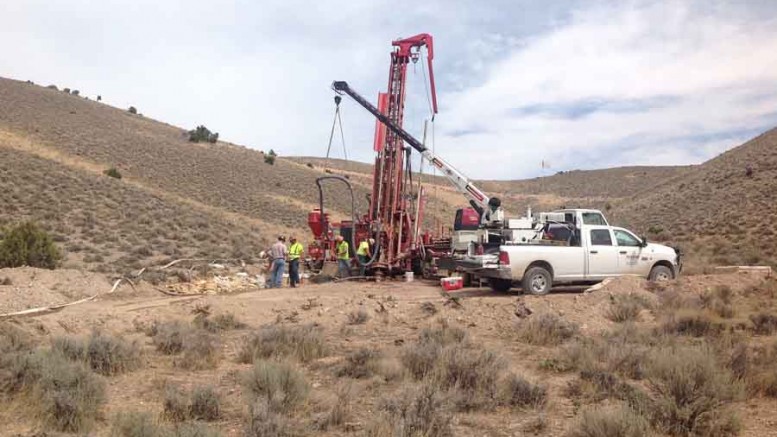
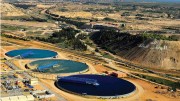
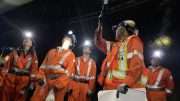
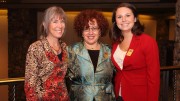
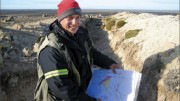
Be the first to comment on "West Kirkland sticks to its guns in Long Canyon"